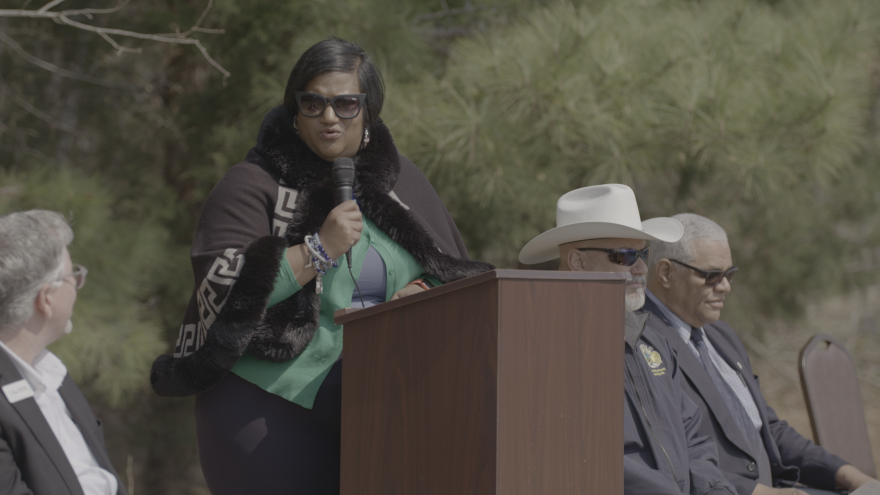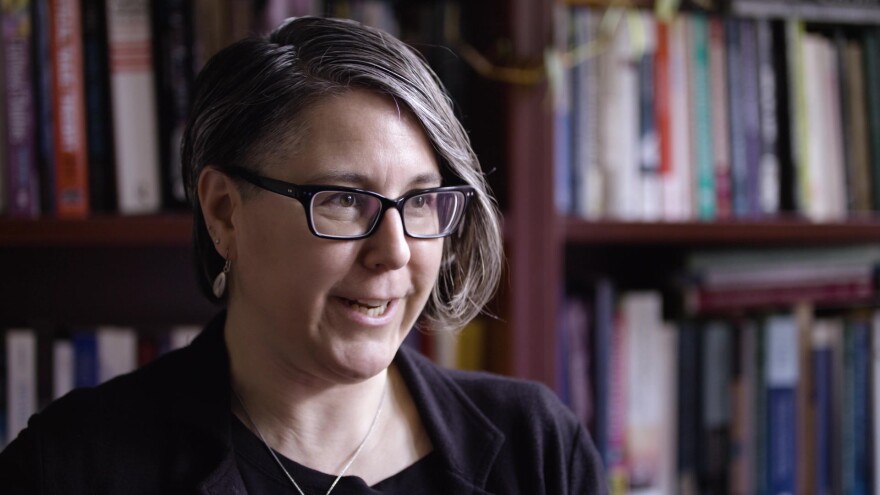It’s been a long time since Michelle Johnson first took notice of the food shortage in Charles City County, where 1 in 7 people don’t know where their next meal is coming from. “Years ago, I went to the Board of Supervisors and said, ‘Can we create a food pantry, because people are in need?’” she recalled.
Johnson was turned down, even though as the county administrator she had the ears of local leaders. Then, in 2020, the pandemic emerged and hit this rural county hard. Soon she found out the board chairman volunteered to deliver food to people in need and saw the problem firsthand: “He called me and said, ‘Miss Johnson, we need to do something.’”

Charles City County is classified as a food desert. The county population of about 6,900 lacks a single grocery store. Now, due in part to Johnson’s persistence, the county has partnered with a local nonprofit to build the County’s first permanent food pantry.
The site also includes a community garden where residents can grow their own food. Johnson hopes the garden will give people the skills to raise food in their own backyards, too. “I’ve envisioned this food pantry to be the catalyst for our community — to be a model for rural Virginia,” she said.
The situation in Charles City County sheds light on the problems of food access and equity that plague many rural communities, and some urban ones too. “The food system is an economic system, a cultural system,” said Kim Niewolny, executive director of the Center for Food Systems & Community Transformation at Virginia Tech. Market forces can produce inequities like the ones in Charles City County, where grocery chains won’t consider opening a store because of factors like a lack of car traffic to justify it.

Instead, many communities in Virginia have greater access to fast-food restaurants and convenience stores than to groceries that stock fresh fruits and vegetables, according to a study on food deserts conducted by Virginia Tech and Virginia State University. “Whose knowledge gets to inform how we eat?” Niewolny asked. “Whose knowledge gets to inform how we produce food? We can’t use the same tools that we’re using now to change the system. We actually need a different imagination.”
Sisters Naomi and Sarah Jones are taking a different approach in starting Jones Gardens, a Staunton nonprofit that creates community garden parks on abandoned or unused plots of land. “I grew up gardening with my family, so I always enjoyed gardening,” said Naomi Jones. “Just seeing the beauty of vegetable plants, I thought it would be really cool to do a garden that really showcases that. And my mom always wanted to make sure we had good nutritious food to eat.”
It’s been eye-opening for Naomi when visitors admit they don’t know how to water a plant or can’t recognize what a weed looks like. “It’s sad that all of that knowledge was lost,” she said. “The Africans that were brought over here, they were experts in rice farming and different things.” One of the goals of Jones Gardens is to rekindle that interest in growing vegetables.
Beyond that, the Jones sisters envision their little corner of Staunton as a catalyst for building relationships. “It’s a community space. It’s a community hub,” said Naomi. “It’s more than just a garden in somebody’s backyard. It’s a place for a community gathering.”
Some people have asked why they don’t sell their crops at the local farmers market. Naomi’s explanation: “A lot of people around here work. They work on the weekends when most farmers markets are open. So, we wanted to have an evening market for them. It makes no sense for our neighbors to help grow this stuff and then take the produce somewhere else.”
In another part of Staunton, Lisa Hartley started a roadside food pantry when she found herself with an abundance of tomatoes: “You plant a half a dozen tomatoes, and you’re one person, and your kids have moved away and your husband doesn’t like tomatoes. So, what do you do with six tomato plants producing tomatoes?”
Her solution was to screw some plastic buckets to an old table and fill them with tomatoes, peppers and cucumbers for anyone to take. Then she got an old cupboard and put a few cans of food in it. It became a community effort. Soon other neighbors were also leaving cans in the pantry, which is always open and free of charge.
“I grew up, in the old country saying, dirt-floor poor,” said Hartley. “I know what it is to fry a piece of bread in Crisco to have something to eat. And it just stuck with me. No one ever should have to go hungry. This is America.”
New solutions for food security are well-suited to the Mid-Atlantic and central Appalachian region, where many different types of food can be grown, according to Niewolny. “There’s lots of research that has come out in the last 25 years or longer why it’s important for us to think about and design regional food systems,” she said. “It’s not an easy thing to do, because of the way we’re currently structured. But people are reformulating, redesigning different types of value chains at a regional level.”
For Naomi and Sarah Jones, being trailblazers carries risks. By breaking new ground, they gained the attention of a complaining neighbor, which forced the City of Staunton to begin drafting an ordinance to regulate what a community garden can be. The women wonder: Can they sell produce? Can they hold community events? While they wait for the ordinance to pass, they are moving forward with Plan A but preparing for Plan B.
As they’ve learned, even when the goals are well-intentioned, barriers to food access can be hard to overcome. “If we could wave the wand, we would’ve done it by now,” said Niewolny. “That’s why I think it’s really important that we acknowledge it’s not just doing new things, it’s how we actually re-envision so there is dignity and humanity in our everyday food experiences.”
This article is based on the Food Insecurity episode from the new VPM docu-series, “Life in the Heart Land.” The series gets at the heart of those creating unique solutions to rural America’s toughest challenges.
Watch Thursdays at 8:30 p.m. on VPM PBS or anytime on the PBS App. Visit vpm.org/heartland to learn more.







